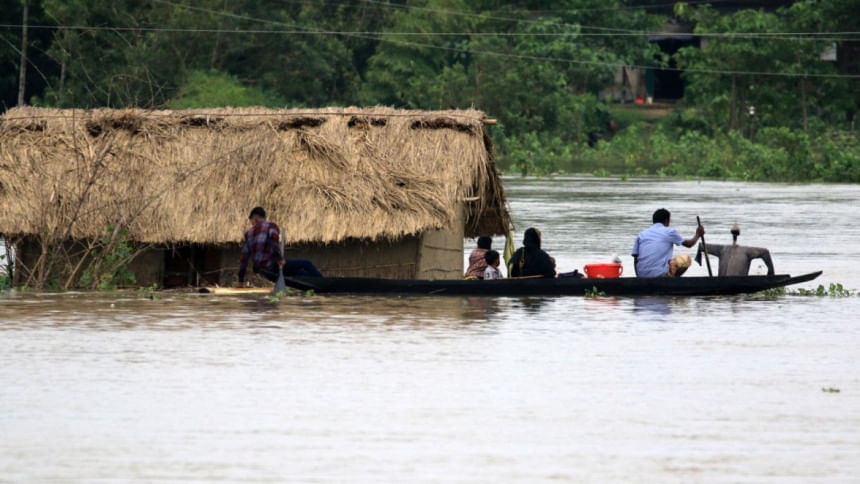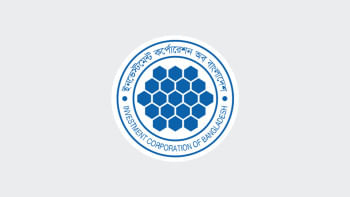Gaps in Bangladesh’s latest Nationally Determined Contribution

By recently endorsing Bangladesh's Third Nationally Determined Contribution (NDC 3.0) on time, the interim government continues the country's climate commitments. The NDCs are periodically prepared by the countries that are parties to the United Nations Framework Convention on Climate Change (UNFCCC) to declare their carbon/greenhouse gas emission reduction plans. Previously, Bangladesh submitted its Intended NDC in 2015, and the updated NDC (NDC 2.0) in 2021.
The latest NDC expects that, by 2035, Bangladesh's carbon emissions will be 418.40 million tonnes of CO2 equivalent, which is 1.66 times more than 2022's emissions. Based on this projection, by 2035, Bangladesh aims to reduce its emissions—from the energy, industry, agriculture, forestry, and waste sectors—by 6.39 percent, spending its own $25.95 billion. If it receives another $90.23 billion internationally, an additional 13.92 percent of emissions will be reduced. Despite the commendable climate commitments during this current political transition, four opportunities were missed in NDC 3.0.
First, evidence of participation of youth and other communities was not apparent in the preparation of the latest NDC, although it specifically recognises children's and youths' participation in its implementation. "Planning processes" is a critical aspect of the Information to Facilitate Clarity, Transparency, and Understanding (ICTU) section of an NDC. Here, a government needs to declare the "Domestic institutional arrangements, public participation and engagement with local communities and indigenous peoples, in a gender-responsive manner" during NDC development.
In response to this requirement, Bangladesh mentions that consultations were held with relevant ministries, divisions and agencies, representatives from academia, the private sector, civil society organisations, and development partners. As with NDC 2.0 (2021), there is no clear evidence in NDC 3.0 that youth and other communities, such as professionals and workers in the energy and industrial sectors, and farmers—who will be significantly affected by the mitigation measures—were consulted. It is disappointing that the latest NDC failed to continue the legacy of participatory planning of the National Adaptation Plan (NAP, 2022-2050), which, despite the Covid pandemic, managed to consult 5,000 people in 2021-2022.
The second issue is about the "Just Transition" chapter. It is an exciting addition to NDC 3.0 because just transition ensures that, when we take climate actions or make our economy greener, we "create decent work, reduce poverty, protect vulnerable groups, and leave no communities behind." In the Cross-Cutting Issues chapter, the NDC elaborately describes how gender equality, disability, and social inclusion in all major carbon-emitting sectors will be ensured. So, a separate section on "Just Transition" may seem redundant. Nevertheless, this chapter appears useful since it describes, albeit in bullet points, the transition measures different sectors should take and the support to be provided to workers and communities. The biggest gap in the Just Transition discussion is probably the overlooking of Bangladesh's climate prosperity plan (2022-2041), which elaborated how just transition, as its second key priority area, would take place in Bangladesh by 2030. It would have been more logical and effective to build on this plan while describing just transition in the new NDC.
The third issue is regarding loss and damage. Climate change-induced "loss and damage" has, for the first time, found its way into NDC 3.0. A list of 43 short, medium, and long-term activities arranged under nine strategic pillars is apparently the first "loss and damage action plan" by Bangladesh. It is, however, mentioned that these will only be implemented with "grant-based finance" from the "polluter countries" responsible for climate change. This approach of playing the victim card is, however, tricky, because many of the NDC's priority adaptation interventions—for example, migration, insurance, health, safe drinking-water, sanitation and hygiene (WASH), and protective infrastructure—are the same as the NDC's loss and damage actions. Also, the NDC does not clarify the link between "adaptation" and "loss and damage;" the latter can occur after failed adaptation attempts or in situations where adaptation is not possible. Thus, the inclusion of loss and damage in the NDC seems weak.
The fourth issue is related to financing, a crucial part of implementing NDC 3.0. A staggering 89 percent funding gap exists against an annual need of $9 billion for mitigation. But the new NDC is not only about mitigation; it also underscores adaptation. The new NDC prioritises 65 such interventions for adaptation, belonging to sectors such as water, disaster management, agriculture, biodiversity, and urban development. These were extracted from 113 interventions originally proposed in the NAP (2022-2050). Of these 65 interventions, 22 either have direct or indirect reference to nature-based solutions (NbS). Despite that, the new NDC overlooked global and national conservation funding opportunities. On the one hand, it does not consider the Global Biodiversity Framework Fund to invest in conservation actions with direct climate benefits. On the other hand, it fails to capitalise on conservation funds provisioned in Bangladesh's "Ecologically Critical Area Management Rules, 2016;" "Protected Area Management Rules, 2017;" and "Bangladesh Biodiversity Act, 2017."
Bangladesh should now prepare the NDC 3.0 Implementation Plan, considering the gaps and realities mentioned above. Speaking of reality, the new NDC covers a period (2026-2035) when the world transitions from the SDG era to the post-SDG era. The NDC implementation, therefore, carries an additional responsibility.
Dr Haseeb Md. Irfanullah is an independent environment and climate change consultant and visiting research fellow at the University of Liberal Arts Bangladesh (ULAB). He can be reached at [email protected].
Views expressed in this article are the author's own.
Follow The Daily Star Opinion on Facebook for the latest opinions, commentaries and analyses by experts and professionals. To contribute your article or letter to The Daily Star Opinion, see our guidelines for submission.

 For all latest news, follow The Daily Star's Google News channel.
For all latest news, follow The Daily Star's Google News channel. 





Comments